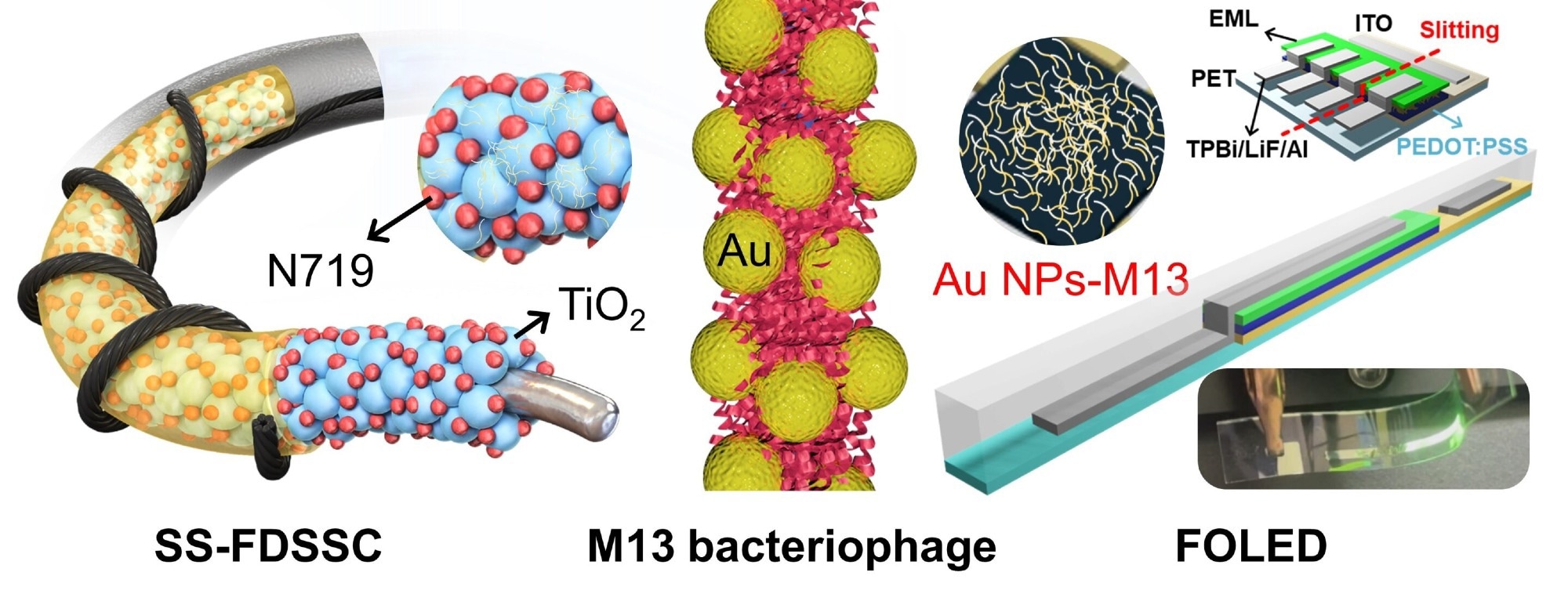A research team at the Korea Institute of Materials Science (KIMS) has created hybrid bio-nanostructures and used them to create fibrous organic light-emitting diodes (FOLEDs) and fibrous solar cells (FSCs) that showed excellent stability and performance over a wide temperature range, from –80 ℃ to 150 ℃. The study has been published in the journal Small Structures.
 Electronic devices using hybrid bio-nanostructures. Image Credit: Korea Institute of Materials Science (KIMS)
Electronic devices using hybrid bio-nanostructures. Image Credit: Korea Institute of Materials Science (KIMS)
The group recorded a 47% increase in the external quantum efficiency (EQE) of the FOLEDs and a 40% increase in the power conversion efficiency (PCE) of the FSCs.
The research team consists of Dr. Jae Ho Kim and Dr. Myungkwan Song from the Korea Institute of Materials Science (KIMS) Energy and Environmental Materials Research Division, in conjunction with Professors Jin-Woo Oh from Pusan National University and Jin Woo Choi from Kongju National University.
The "spin coating" technique, frequently employed to coat metal nanoparticles, makes producing thin films quick and easy. However, this technique is disadvantageous because it is unable to coat metal nanoparticles uniformly and neatly.
To solve this problem, the group created the "M13 bacteriophage," a biomaterial that can evenly and systematically arrange metal nanoparticles. Active groups on the M13 bacteriophage bind to metal cations to guarantee that they are all arranged consistently.
The hybrid bio-nanostructure made from the M13 bacteriophage makes high-performance FSCs and FOLEDs possible. It shows excellent stability in both air and moisture. It was verified that it demonstrated exceptional qualities in extremely cold and hot conditions (-80 and 150 °C) and washing durability.
Electronic devices, such as piezoelectric devices, solar cells, sensors, and organic light-emitting diodes, can all benefit from using the M13 bacteriophage. This technology stands out for its ability to easily align and arrange metal nanoparticles when hybrid bio-nanostructures are used. It can be used with various electronic devices to optimize the surface plasmonic effect.
If this technology is used to speed up localization and mass production, it is anticipated that it will provide substantial financial gains for electronic device manufacturers.
By utilizing hybrid bio-nanostructures, we can improve both performance and stability in the field of electronic devices. It is expected to be applied in various fields such as sensor materials as well as energy production and storage materials in the future.
Myungkwan Song, Principal Investigator and Study Lead, Energy and Environmental Materials Research Division, Korea Institute of Materials Science
Journal Reference:
Song, M., et al. (2024) Novel Strategy towards Efficiency Enhancement of Flexible Optoelectronic Devices with Engineered M13 Bacteriophage. Small Structures. doi.org/10.1002/sstr.202400007